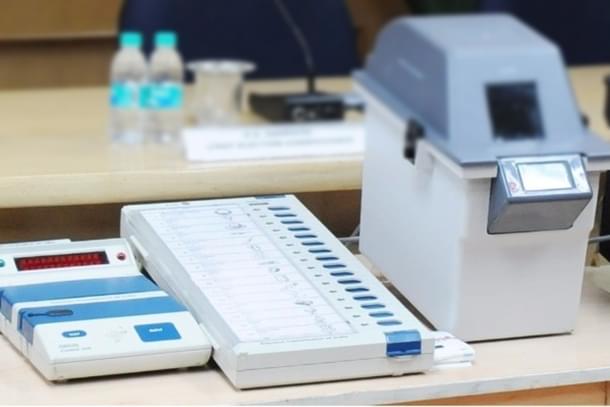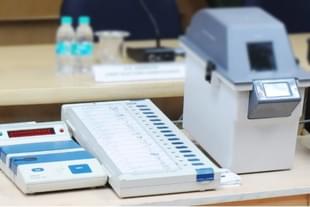News Brief
EC To Facilitate Post-Election EVM Verification With 1,400 Vote Mock Poll: All You Need To Know
Kuldeep Negi
Jul 16, 2024, 01:34 PM | Updated 01:34 PM IST
Save & read from anywhere!
Bookmark stories for easy access on any device or the Swarajya app.


The Election Commission (EC) is reportedly set to include a mock poll in its protocol for the Supreme Court-mandated verification of Electronic Voting Machines (EVMs) used in the recently concluded Lok Sabha elections.
The poll panel is likely to permit candidates to cast up to 1,400 votes on the machines selected for the process.
The EC received eight applications for verification of EVMs used in the 18th Lok Sabha elections, along with three applications for the Assembly elections in Andhra Pradesh and Odisha, which were held simultaneously.
These applications were received after the Supreme Court order in April, when, for the first time, the apex court gave candidates who stood second and third the right to seek verification of the burnt memory/microcontrollers of 5 percent of EVMs per Assembly segment or constituency.
On 1 June, the poll panel released an administrative Standard Operating Procedure (SOP), which says candidates who want to apply for verification must do so within seven days of the results and deposit Rs 40,000 per EVM.
The EC is finalising the technical SOP detailing how the burnt memory verification will be done, and is likely to release it this week.
The Commission is considering a mock poll on machines identified by the candidates, a proven method to verify EVM efficacy, Indian Express reported citing sources.
As part of the process, the matching of VVPAT slips with the EVM count will also be done.
Candidates can personally cast votes or have a representative do so during the mock poll.
They may also choose the sequence in which the three parts of the EVM — Control Unit (CU), Ballot Unit, and Voter Verifiable Paper Audit Trail Unit (VVPAT) — are arranged and connected.
The CU controls the functioning of the EVM. A voter cannot cast his/her vote unless the CU is activated.
The BU carries the names of the parties and candidates, and the VVPAT is supposed to print a slip with the symbol of the candidate for whom a vote is cast, allowing the voter to verify her vote.
Currently, the three parts of the EVM are connected in the following order: the BU is connected to the VVPAT, and the VVPAT is connected to the CU.
However, these components can be connected in any sequence without impacting EVM functionality.
To satisfy the candidate seeking verification, the Commission is also likely to permit her to have the three parts connected in any order of her preference.
Earlier on 26 April, the Supreme Court rejected a request for 100 percent verification of VVPAT slips against EVM counts but directed the EC to make certain post-counting procedure modifications to bolster trust in the electronic voting system.
The apex court directed the EC to seal and store symbol loading units (SLUs) for 45 days after the results are announced.
SLUs, used to upload symbols to VVPAT machines, are connected to a computer initially.
After the results are declared, these SLUs are to be opened, examined, and handled in the same manner as EVMs. It’s not clear if the EC has decided the procedure for examination of SLUs, the IE report said.
Additionally, the Supreme Court also granted candidates who stood second and third the right to request verification of the EVMs.
According to the 1 June administrative SOP released by the EC, candidates would get one week from the date of results to apply for EVM verification.
However, verification will only be possible after 45 days (from the date of results), since candidates have the right to file election petitions to challenge the result.
If an election petition is filed, candidates will have to obtain special permission from the High Court for EVM verification, as EVMs of the constituency pertaining to which a petition is filed are sealed by the Commission.
Kuldeep is Senior Editor (Newsroom) at Swarajya. He tweets at @kaydnegi.





